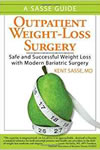All Articles
Accident Investigation & Reconstruction
International Trade
Accident Prevention & Safety
Investigation & Surveillance
Anger Management & Related Issues
Laws & Procedures
Archaeology - Archeology
Machinery
Arms - Guns - Weapons
Marketing
Artificial Intelligence (AI) / Machine Learning (ML)
Mediation
Automotive - Vehicular
Medical Malpractice
Bacteria - Fungus - Mold Investigation
Meditation
Child Welfare
Nursing
Computers
Oil & Gas
Cosmetology: Hair / Makeup
Pain Management
Counseling
Patents
Documentation Examination & Analysis
Pharmacy & Pharmacology
Economics
Police Practices & Procedures
Education & Schools
Psychology
Engines (Combustion - Diesel)
Public Speaking
Environment
Real Estate
Ethics / Ethical Duties
Recreation & Sports
Finance
Risk Management
Fires & Explosions
Slip, Trip & Fall
Forensic Analysis
Speech-Language Pathology
Gems & Jewelry
Terrorism - Homeland Security
Hazardous Materials
Underwriting
Hydrology
Warnings & Labels
Industrial Hygiene and Safety
Workplace Violence
More...

BIOMECHANICS-PAGE ARTICLES MAIN PAGE
. Contact Us if you are interested in having your work published on our website and linked to your Profile(s).
All Articles
Accident Investigation & Reconstruction
Forensic Analysis
Accounting
Hazardous Materials
Alcohol, Tobacco & Other Drugs
Healthcare
Alternative Dispute Resolution (ADR)
Industrial Hygiene and Safety
Animals
Intellectual Property
Archaeology - Archeology
International Trade
Arms - Guns - Weapons
Land Mapping - Surveying - Zoning
Attorney Fees
Linguistics
Banking
Machinery
Biokinetics
Medical Records Review
Chemical Industry
Nursing
Child Welfare
OSHA
Child Witch Phenomenon
Pain Management
Construction
Police Practices & Procedures
Corrosion
Premises Liability
Cosmetology: Hair / Makeup
Product Liability
Crisis Management
Radiology
Elevators - Escalator - Automatic Doors
Search Engine Optimization (SEO)
Engineering
Security
Enterprise Resource Planning (ERP)
Slip, Trip & Fall
Ethics / Ethical Duties
Supply Chain Management
Exercise & Fitness
Terrorism - Homeland Security
Failure Analysis
Toxicology
Food & Beverage
Transportation
Foreign Affairs - Geopolitics
Yoga
More...
Featured Articles
There are no active articles here at this time. Please use the search bar, try another category, or contact us if you would like to contribute an article.
This Article is unavailable. Contact Us
Search articles by title, description, author etc.
Sort Featured Articles
Featured resources
Probability and Statistics for...
by Anthony Hayter, PhD
Environmental Fate and Effects of...
by Joel R. Coats, et al. (editors)
Outpatient Weight-Loss Surgery: Safe...
by Kent Sasse, MD
Follow us










